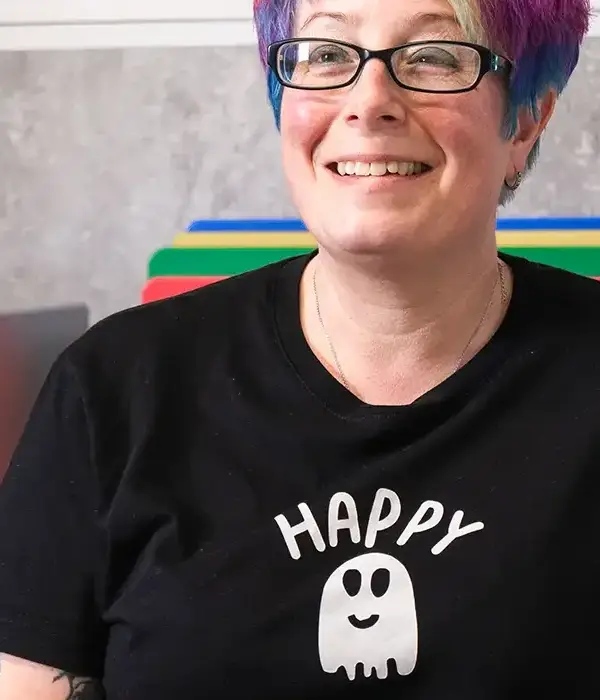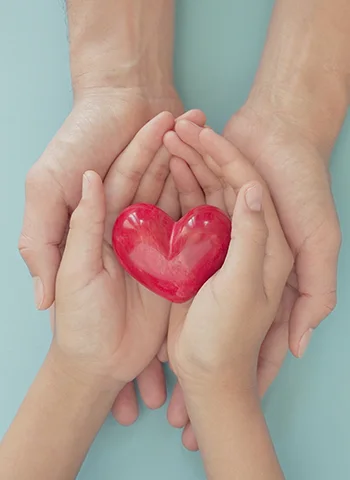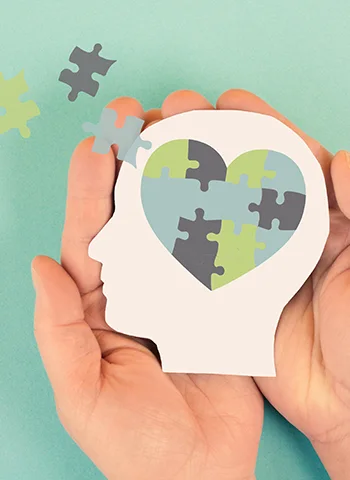BPD Treatment
If you are looking for ways to manage borderline personality disorder (BPD), you might be wondering which treatments work best and how they can help you feel more stable in your everyday life.
You do not have to manage BPD alone. Many people find that a mix of therapies, self-care strategies, and support groups can make a real difference. The right BPD treatment, often as part of wider mental health treatment, can help you build healthier habits and deal with intense feelings more calmly. Evidence-based behavioural therapies also play a key role in improving emotional regulation and long-term recovery.

Take the First Step Towards Recovery
Steps Together offers personalised support and proven treatments, providing the care, guidance and encouragement you need to move forward with confidence and build a healthier future.

Understanding BPD Treatment Approaches
Borderline Personality Disorder is a mental health condition characterised by intense emotions, unstable relationships, fear of abandonment, and impulsive behaviours. If you have BPD, you may struggle with your self-image and experience rapid mood shifts or difficulty managing emotional distress.
Getting effective care for Borderline Personality Disorder begins with an accurate diagnosis and a treatment plan tailored to each person’s unique needs. Correct diagnosis and thoughtful planning help ensure you receive the support and treatment most likely to help you manage symptoms and improve your quality of life.
Diagnosis and Assessment
A mental health professional, such as a psychiatrist, typically assesses adults for BPD. This process involves talking about your thoughts, feelings, and behaviours in detail. The professional may use structured interviews or questionnaires designed to identify symptoms of personality disorders.
BPD is diagnosed if you have long-term patterns of instability in mood, relationships, self-image, and behaviour. A psychologist must rule out other mental health conditions before confirming BPD. The assessment may also include gathering information from family members or reviewing past mental health records.


Personalised Treatment Planning
After diagnosis, your team will develop a personalised treatment plan. This plan often includes different types of therapies designed to help you manage symptoms and improve your ability to function day-to-day. The most commonly recommended therapy for BPD is Dialectical Behaviour Therapy.
Your plan may also include other psychiatric treatments, depending on what suits your needs. If you have other mental health conditions, your team will consider these when creating your plan. Medication is not the main treatment, but may be used to manage specific symptoms.
Treatment for Borderline Personality Disorder
Psychological therapies are the primary and most effective treatment options for borderline personality disorder. You can benefit from different types of talking therapies, each with unique methods for addressing symptoms, emotions, and relationships. The right treatment for BPD may include:
Dialectical Behaviour Therapy
Dialectical Behaviour Therapy (DBT) is widely considered the best-supported BPD treatment. DBT is a type of psychotherapy that combines cognitive-behavioural techniques with mindfulness strategies. It helps you learn how to manage overwhelming emotions, reduce self-harm, and improve relationships.
Most DBT programmes involve both individual therapy and group skills training. You attend regular sessions where you learn specific skills in areas such as emotional regulation, distress tolerance, and interpersonal effectiveness. It is especially recommended if you engage in self-harm or have chronic suicidal thoughts.
Inpatient Treatment
In some cases, residential treatment is recommended, especially if you are at serious risk of harm to yourself or others. Inpatient programmes offer 24-hour support and safety in a structured environment. You might be offered medication to help manage symptoms, though psychological therapies are still the primary approach.
During your stay, you may take part in therapy sessions including DBT , individual counselling, and group activities. Inpatient care can also help stabilise your mood if you have intense symptoms that prevent you from living safely at home. The focus is on crisis management and short-term support.
Cognitive Behavioural Therapy
Cognitive behavioural therapy focuses on recognising and changing unhelpful patterns of thinking, behaviour, and emotion. In BPD treatment, CBT targets specific symptoms, such as mood swings, anxiety, and impulsiveness.
CBT is usually structured and time-limited. You work together with your therapist to set goals and track progress each week. While CBT is helpful for some people with BPD, it may not address the full range of issues, such as chronic emptiness or fears of abandonment.
Group Therapy and Support Groups
Therapy groups provide a space where you can practise social skills and build supportive relationships. Group therapy is often combined with individual therapy in BPD treatment plans.
These groups, such as DBT skills groups or therapeutic communities, help you learn from others who share similar experiences. They focus on building trust, respect, and coping strategies, key skills for managing daily life with BPD. Support groups can also offer peer advice and emotional comfort.
Services that our multi-speciality addiction rehabilitation centres offer

Medication
Medicines are not the primary treatment for borderline personality disorder, but they can play a role in managing specific symptoms or co-occurring conditions such as anxiety, depression, or mood swings. Prescribed medications can offer short-term relief, particularly during acute crises or periods of high distress.
Medications are often used alongside therapy to help stabilise mood and improve functioning. Treatment plans are tailored to individual needs, and any medication use should be carefully monitored by a qualified mental health professional.
Antidepressants and Antipsychotics
Most experts agree that there is no medication to treat BPD specifically. Antidepressants, such as SSRIs, are sometimes prescribed for symptoms like low mood, irritability, or anxiety. Antipsychotics might be used if you have symptoms like intense anger, severe mood swings, or brief periods of paranoia.
It is common for people with BPD to have other mental health problems, such as depression, anxiety, or sometimes bipolar disorder. Medicines are mostly used to treat these co-occurring conditions, rather than the BPD itself. For example, if you have ongoing depression along with BPD, your doctor might suggest an antidepressant.

Self-Help Strategies and Lifestyle Support
Practising mindfulness helps you notice your emotions and reactions rather than getting overwhelmed by them. Mindfulness exercises like focused breathing or paying close attention to your senses can make challenging moments easier to handle. Meditation can also help you slow down racing thoughts and bring calm into your routine.
Staying physically active supports your emotional well-being. Regular exercise can reduce anxiety, improve mood, and help you manage stress. Activities such as walking, yoga, or swimming are simple but effective. Eating nutritious meals fuels your body and mind. Keeping a regular sleep schedule and drink enough water.
Having support makes a real difference. Reach out to friends, family, or a support group so you do not have to deal with challenges on your own. Many people with BPD find it helpful to join therapeutic communities, either in person or online.
Improving Emotional Regulation
Building healthier relationships and learning to control your emotions are essential skills for managing BPD. With practice, you can develop strategies that reduce impulsiveness, strengthen your social connections, and draw effective support from others.
Managing Impulsiveness and Self-Harm
Impulsiveness and self-harm are common challenges for people with BPD. Learning to pause before acting on urges is an important step. You can use grounding techniques like counting backwards, holding an ice cube, or naming objects around you.
These help distract your mind and slow down impulsive actions. It also helps to keep a safety plan with a list of helpful contacts and steps to take when you feel unsafe. Group therapy offers the chance to practise new coping strategies with others who understand your struggles.
Support from Family and Peers
Family and friends play a big part in treating BPD. Their understanding and compassion make a real difference. It is important to educate those close to you about BPD and the challenges you face.
Attending family therapy sessions can help everyone learn how to communicate better and set healthy boundaries. Support groups for carers and loved ones are also helpful for sharing advice and reducing stress.
Strengthening Interpersonal Connections
Relationships can feel intense or unstable when you have BPD. It is helpful to learn how to identify triggers that make you feel rejected, abandoned, or misunderstood. Practising communication skills, such as using “I” statements, helps to express your needs without blaming others.
DBT also focuses on interpersonal effectiveness. This includes ways to set boundaries, ask for help, and calmly handle conflict. Role-playing and group therapy sessions allow you to try these skills in a supportive environment before using them in real life.

You Can Manage Your Mental Health
Borderline Personality Disorder can be a challenging condition to live with, often affecting a person’s emotional wellbeing, relationships, and day-to-day life. It can also affect family, friends, and loved ones. However, with the right support, BPD symptoms can be managed effectively.
At Steps Together, our BPD treatment is designed to help you achieve greater emotional stability, develop healthier coping strategies, and improve your quality of life. Reach out to us by phone or email to learn more about how to start your treatment journey.
Frequently Asked Questions
What medications are commonly prescribed for treating Borderline Personality Disorder?
No medicine is approved just for BPD. However, doctors sometimes give mood stabilisers, antidepressants, or antipsychotics to manage symptoms like anxiety, mood swings, or depression.
What are the typical manifestations of Borderline Personality Disorder in females?
BPD in females often includes intense emotions, unstable relationships, and fear of being abandoned. Self-harm or risky actions may happen during tough times. Women may also change moods quickly and feel unsure about who they are. Patterns of strong anger and ongoing sadness are quite common.
Upon suspecting Borderline Personality Disorder, what immediate steps should be taken?
If you think you have BPD, talk to your doctor or a mental health expert. They may do an assessment and discuss your history and current struggles. Family support and self-education are also important.
Are there any innovative therapies for Borderline Personality Disorder that have emerged recently?
DBT is the most well-known therapy for BPD. Some clinics offer new digital tools and self-help apps as extra support. These may help you track moods and use coping skills between sessions.
How can one conduct a self-assessment for Borderline Personality Disorder symptoms?
You can look for signs like quick mood changes, strong reactions to stress, problems in relationships, and fear of being alone. Notice if you often feel empty or behave impulsively. Screening quizzes online can give some guidance, but a full diagnosis should always come from a mental health professional.
Which therapeutic approach is considered the most efficacious in managing Borderline Personality Disorder?
Dialectical Behaviour Therapy is shown to help many people manage BPD symptoms. Other talking therapies like Cognitive Behavioural Therapy are also used.





